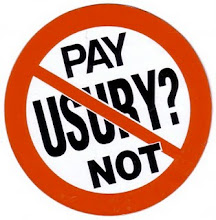Credit Card Statistics

Eighty-four percent of the student population overall have credit cards, an increase of approximately 11 percent since the fall of 2004. (Source: Sallie Mae, "How Undergraduate Students Use Credit Cards," April 2009)
Seniors graduated with an average credit card debt of more than $4,100, up from $2,900 almost four years ago. Close to one-fifth of seniors carried balances greater than $7,000. (Source: Sallie Mae, "How Undergraduate Students Use Credit Cards," April 2009)
Penalty fees from credit cards will add up to about $20.5 billion in 2009, according to R. K. Hammer, a consultant to the credit card industry. (Source: New York Times, September 2009)
78 percent of American households -- about 91.1 million -- had one or more credit cards at the end of 2008. A year earlier, there were 90.4 million households with cards. (Source: Nilson Report, April 2009)
76 percent of undergraduates have credit cards, and the average undergrad has $2,200 in credit card. Additionally, they will amass almost $20,000 in student debt. (Source: Nellie Mae, "Undergraduate Students and Credit Cards in 2004: An Analysis of Usage Rates and Trends")
Approximately 74.9 percent of the U.S. families surveyed in 2004 had credit cards, and 58 percent of those families carried a balance. In 2001, 76.2 percent of families had credit cards, and 55 percent of those families carried a balance. (Source: Federal Reserve Bulletin, February 2006)
At the end of 2008, Americans' credit card debt reached $972.73 billion, up 1.12% from 2007. That number includes both general purpose credit cards and private label credit cards that aren't owned by a bank. (Source: Nilson Report, April 2009)
Average credit card debt per household -- regardless of whether they have a credit card or not -- was $8,329 at the end of 2008. (Source: Nilson Report, April 2009)
Undergraduates are carryingrecord-high credit card balances. The average (mean) balance grew to $3,173, the highest in the years the study has been conducted. Median debt grew from 2004’s $946 to $1,645. Twenty-one percent of undergraduates had balances of between $3,000 and $7,000, also up from the last study. (Source: Sallie Mae, "How Undergraduate Students Use Credit Cards," April 2009)
Total U.S. consumer debt (which includes credit card debt and noncredit-card debt but not mortgage debt) reached $2.56 trillion at the end of 2008, up from $2.52 trillion at the end of 2007. (Source: Federal Reserve's G.19 report, February 2009)
26 percent of Americans, or more than 58 million adults, admit to not paying all of their bills on time. Among African-Americans, this number is at 51 percent. (Source: National Foundation for Credit Counseling, 2009 Financial Literacy Survey, April 2009)
93 percent of cards allowed the issuer to raise any interest rate at any time by changing the account agreement. (Source: Pew Safe Credit Cards Project, March 2009)
72 percent of cards included offers of low promotional rates which issuers could revoke after a single late payment. (Source: Pew Safe Credit Cards Project, March 2009)
Two-thirds of survey respondents said they would consider switching their primary credit card if a better feature were offered. (Source: ComScore, September 2008)
It is estimated that there are 10,000 payment card transactions made every second around the world.
(Source: American Bankers Association, March 2009) (snip) ....
This information is posted at this website along with some graphs:
http://stopusuryinamerica.com/didyouknow.html
And there is more relevant information at the main website:
http://stopusuryinamerica.com


0 Comments:
Post a Comment
<< Home